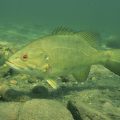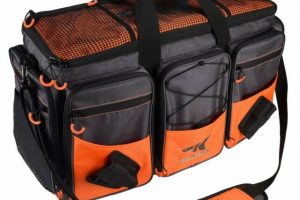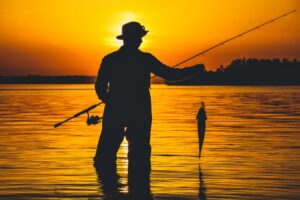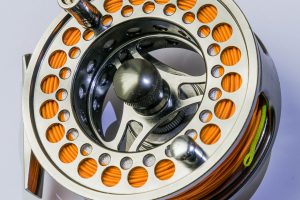How To Fish With a Frog and a Frog Lure?
Frogs, like baitfish and leeches, provide a highly effective way to catch fish. The secret is that they move through the water with a natural disturbance that attracts fish. When fishing with frogs, it is essential to understand how they work and what is needed to be successful.
Fishing is a great way to enjoy the outdoors, but if you’re tired of the same old methods and looking for a new challenge, try fishing with frogs. It might sound crazy at first, but it’s fun and easy once you start.
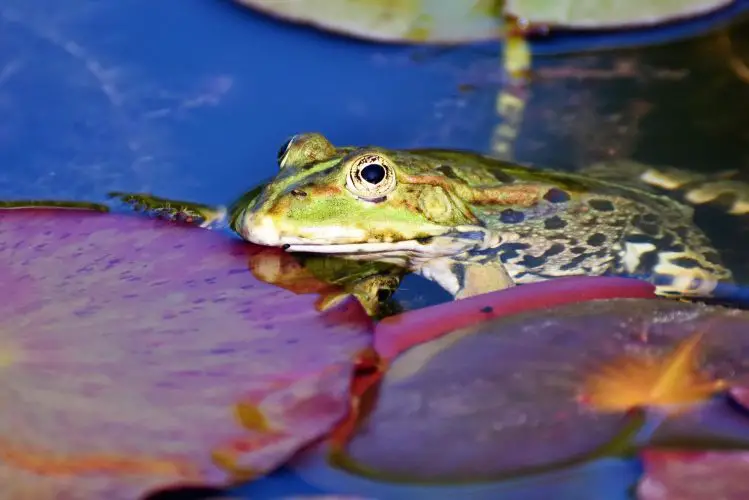 Finding the Frog Lures
Finding the Frog Lures
The first step in fishing with frogs is to find a frog lure. You can do this by searching the internet, or you can visit your local fishing store and look for a variety of lures.
You want to make sure that the frog lure has some of these characteristics:
- It looks like a frog.
- It’s the right size for your hook, line, and rod setup.
- It’s close enough in color to match what you want to catch (for example, if you’re fishing for bass, then green and brown are good colors)
Choosing the Right Frog Lure
When choosing the right frog lure, you need to consider three variables:
Size
The lure size should be proportionate to the fish that live in the area you are fishing in. Larger lures will work best if you are fishing for bass on a lake.
On smaller bodies of water with different types of fish, however, smaller lures may be more effective because they can easily get lost among weeds and other debris that floats on top of waterways like ponds or lakes.
Color
Specific colors attract certain types of fish better than others—and some frogs come in multiple colors! You’ll want to pick one that matches what’s available in your area so that it looks as natural as possible when moving through water and attracting attention from nearby predators (such as bass).
Action type
What kind of action does this particular frog give off when pulled through water? Is it slow-moving? Fast-moving? Does it have side-to-side movement or just straight up and down motion? As with the color choice above, choosing an appropriate action type is essential because it will determine how well your lure mimics prey swimming around underwater environments where hungry predators lurk just waiting for something tasty enough to float by so they can snatch them up.
How to Actually Fish With a Frog Lure?
Fishing with frogs is a lot like fishing in general. You must use a hook, bait your line, and cast it into the water. You can also use a fishing pole, but the following instructions are for someone who wants to avoid this option because it’s expensive or just doesn’t want to deal with standing up too much.
Fishing with a frog lure is simple.
- Cast your frog to lure out into the water.
- Let it sink to the bottom of the water, where you have located fish by using your fishing rod or fishing line to pull them up from below.
- Wait for a fish to bite on your hook and set the hook in its mouth so that it cannot escape from your hook. You’ll know when one has taken hold because you’ll feel the tension in your line as well as see some sort of movement on land (this will be harder if you’re using an underwater camera).
- Bring the fish back onto shore by reeling in your line until they are near enough for you to grab them! Now put them back where they belong- in nature- and enjoy fresh food.
How To Fish With Frogs?
Fishing with frogs is a great way to catch fish. But you might be wondering: how do you go about it?
Here are the basics of frog fishing, along with some tips and tricks that’ll help you succeed.
Use A Frog-Friendly Hook
The first step in fishing with frogs is choosing the right hook. You need a hook that’s light enough not to break the line but heavy sufficient to hold onto your frog. Most hooks designed for frog fishing use bait clamps or split rings so the hook can’t slip off when you throw it in the water.
Choose Appropriate Frog Fishing Gear
The next step is getting the right gear for frog fishing. If you’re using live bait like crickets or worms, make sure they’re in containers, so they don’t get away. Also, make sure that your line is strong enough to hold up well against sharp teeth or rough scales if you’re trying to catch something bigger than a goldfish (see tip #3).
Pick A Frog With Subtle Colors And Patterns
The best frogs for fishing are ones that are patterned with darker spots. The darker the spots, the better. You want a frog that will blend in with the environment and not draw attention to itself.
Wait For The Fish To Eat Your Frog
There are two ways to do this. If you’re fishing in a river or stream, wait for your frog to float downstream so that a fish can eat it. If you’re fishing in a pond or lake, wait until twilight, when most predators have gone to sleep, and drop your frog into the water from above.
Do Not Act Like You Are Fishing With Live Bait
If you have ever tried to fool someone into thinking that there is something alive on their hook before they’ve even cast out their line, then you know how hard it can be to make them believe it later on when they finally catch something! When fishing with frogs, just act normal—don’t say anything about how cool they are or what they’ll help you catch until after
Conclusion
By using some of the techniques listed above, you may be able to catch a few more fish. In other words, these techniques will enable you to achieve your desired outcome. You can also use techniques like Go Fish that will allow you to see how many tricks you have remaining to achieve the desired outcome.

